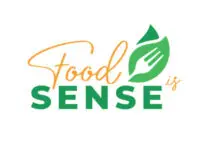Transportation of the food products, including milk, juices, oils, or liquid sweeteners, necessitates more than a basic tanker. The choice of tank trailers is critical to food safety, product integrity, and regulatory compliance. As a carrier serving dairies or a logistics manager collaborating with food producers, selecting the right equipment ensures that perishable liquids are delivered fresh without violating food safety regulations. Below are three key ideas when choosing a tank trailer for food transportation.
1. Choose the Right Material for Food Safety and Compliance
The construction material of tank trailers is one of the most critical components for transporting food products. Stainless steel is widely applied due to its non-reactive and corrosion-resistant nature. It also does not contaminate and can be easily sanitized, which is a critical need for regulations like those of the U.S. Food and Drug Administration (FDA).
Food-grade trailers should conform to high levels of hygiene, with smooth and crevice-free interiors to prevent bacterial growth. When transporting temperature-sensitive goods, e.g., dairy products, look at insulated or jacketed tanks to help keep the internal temperature of the cargo constant.
2. Match Tank Design to Product Type
The’ physical and chemical properties of liquid food products cannot be the same. Viscosity, acidity, reactivity, and fragility may affect the type of trailer used. For example, viscous products like corn syrup need trailers with heating units or bottom unloading devices. In contrast, transportation of milk or juice might require an insulated chamber that is accessible for cleaning.
An ideal tank design will feature effective baffling to prevent surges during transportation, thereby keeping the driver and product safe. Poor trailer design can also lead to changes in temperature or contamination, particularly on long-haul trips. Tank trailers should also have clean-in-place (CIP) systems or be accessible for manual cleaning, which is necessary to ensure safe reuse. Sanitation plays an essential role in the transportation of food, particularly during product transfers.
3. Consider Operational Needs and Partner Experience
The usability of your tank trailer is key in addition to precise specifications. Design your loading/unloading infrastructure, the routes you will run on, and compatibility with other logistics equipment. If your product is oxygen or light-sensitive, ensure the trailer contains secure sealing systems and UV-resistant coatings.
It is also prudent to consult a provider with experience in food-grade hauling needs. Compliance and product protection can also be accomplished through a knowledgeable supplier who can configure the proper trailer to meet your application. One helpful resource for learning more about equipment options is to consult with industry leaders who can provide information on the tank trailers used for transporting food products, including their material specifications, safety features, and sanitation requirements.
The logistics of transporting any liquid food products are not as simple as selecting a trailer with the proper capacity. Choosing the appropriate materials, designing the tank in coherence with the product type, and reflecting the realities of operation ensures that the correct choices safeguard the quality of the products. By adhering to these three aspects, companies can consistently provide safe, efficient, and compliant food-grade transportation.

